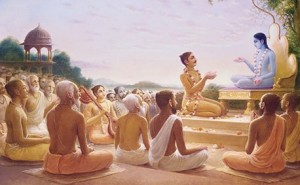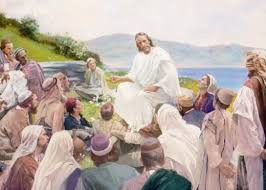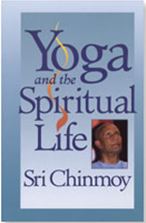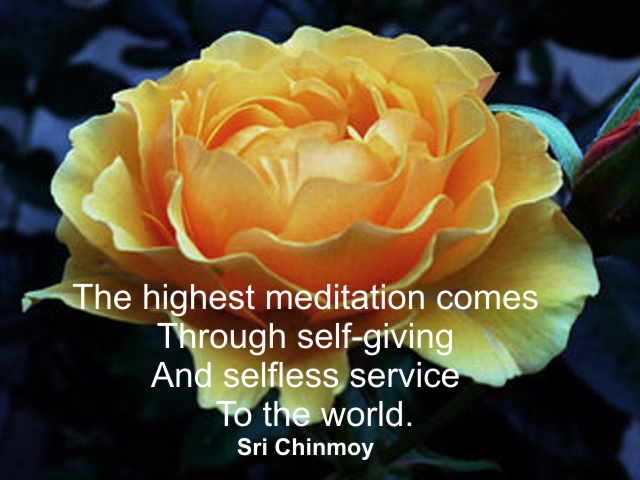Humanity’s great teachers, the spiritual masters, sages and yogis that have been with us over the long centuries, tell us how remarkable and splendid the human soul is, its capacity for love and compassion, the hope it carries for a brighter future and a peaceful world. They remind us that every soul is unique, a special dream of God – and that we each have something new to offer to the world, a gift or talent to uplift and inspire others. It may be in what you already do – baking bread, driving a cab, teaching, working with the sick or afflicted – or it may still be asleep inside you, your present life a preparation and readying for its discovery. Much of our happiness lies in a life lived close to this purpose.
long centuries, tell us how remarkable and splendid the human soul is, its capacity for love and compassion, the hope it carries for a brighter future and a peaceful world. They remind us that every soul is unique, a special dream of God – and that we each have something new to offer to the world, a gift or talent to uplift and inspire others. It may be in what you already do – baking bread, driving a cab, teaching, working with the sick or afflicted – or it may still be asleep inside you, your present life a preparation and readying for its discovery. Much of our happiness lies in a life lived close to this purpose.
In spiritual literature a life lived close to the soul’s purposes is the path of karma yoga, the  recognition that our daily life is not separate from our spiritual practices, our prayer and meditation, but an equal and integral part of it. All of our life activities present us with endless opportunities to stay in touch with and manifest our very best qualities. Thus karma yoga is the spiritual path that embraces life and everyday living as a way to spiritual development and progress. Rather than the path of seclusion, karma yoga sees in the everyday challenges of life countless opportunities to learn, deepen and multiply our many good qualities – love, compassion, patience, peacefulness, strength – in the face of the many experiences that test our equanimity. Living itself is our sadhana – our training ground in selflessness, egolessness, humility and detachment.
recognition that our daily life is not separate from our spiritual practices, our prayer and meditation, but an equal and integral part of it. All of our life activities present us with endless opportunities to stay in touch with and manifest our very best qualities. Thus karma yoga is the spiritual path that embraces life and everyday living as a way to spiritual development and progress. Rather than the path of seclusion, karma yoga sees in the everyday challenges of life countless opportunities to learn, deepen and multiply our many good qualities – love, compassion, patience, peacefulness, strength – in the face of the many experiences that test our equanimity. Living itself is our sadhana – our training ground in selflessness, egolessness, humility and detachment.

In the book ‘Yoga and the Spiritual Life’ Sri Chinmoy writes: ‘Yoga is union. It is the union of the individual soul with the Supreme Self. Yoga is the spiritual science that teaches us how the Ultimate Reality can be realised in life itself. There are various kinds of Yoga: Karma Yoga, the path of action; Bhakti Yoga, the path of love and devotion; and Jnana Yoga, the path of knowledge. These three are considered to be the most important kinds of Yoga. There are other significant types of Yoga, but they are either branches of these three or closely related to them. In Jnana Yoga there is a significant branch which we call Raja Yoga, the Yoga of mysticism.These paths all lead to the same destined Goal.
‘These main three yogic paths serve as the three main gates to God’s Palace. If we want to see and feel God in the sweetest and most intimate way, then we have to practise Bhakti Yoga. If we want to realise God in humanity through our selfless service, then we have to practise Karma Yoga. If we want to realise the wisdom and glories of God’s transcendental Self, then we have to practise Jnana Yoga.
‘Karma Yoga is the Yoga of dedicated service. In the ordinary life, we have a motive when we work. There is always something we want to achieve. But if our only aim is to please God in His own way through our dedicated selfless service, if we do not care for anything else — not for name or fame or outer success — then this is real Karma Yoga. In Karma Yoga we progress toward union with God through our selfless actions.
Karma Yoga is desireless action undertaken for the sake of the Supreme – it claims that life is a divine opportunity for serving God. Those who follow this path pray for a strong and perfect body. They also pray for a long life. This long life is not a mere prolongation of life in terms of years. It is a life that longs for the descent of the divine Truth, Light and Power into the material plane. The Karma yogins are the real heroes on the earthly scene, and theirs is the divinely triumphant victory.’
